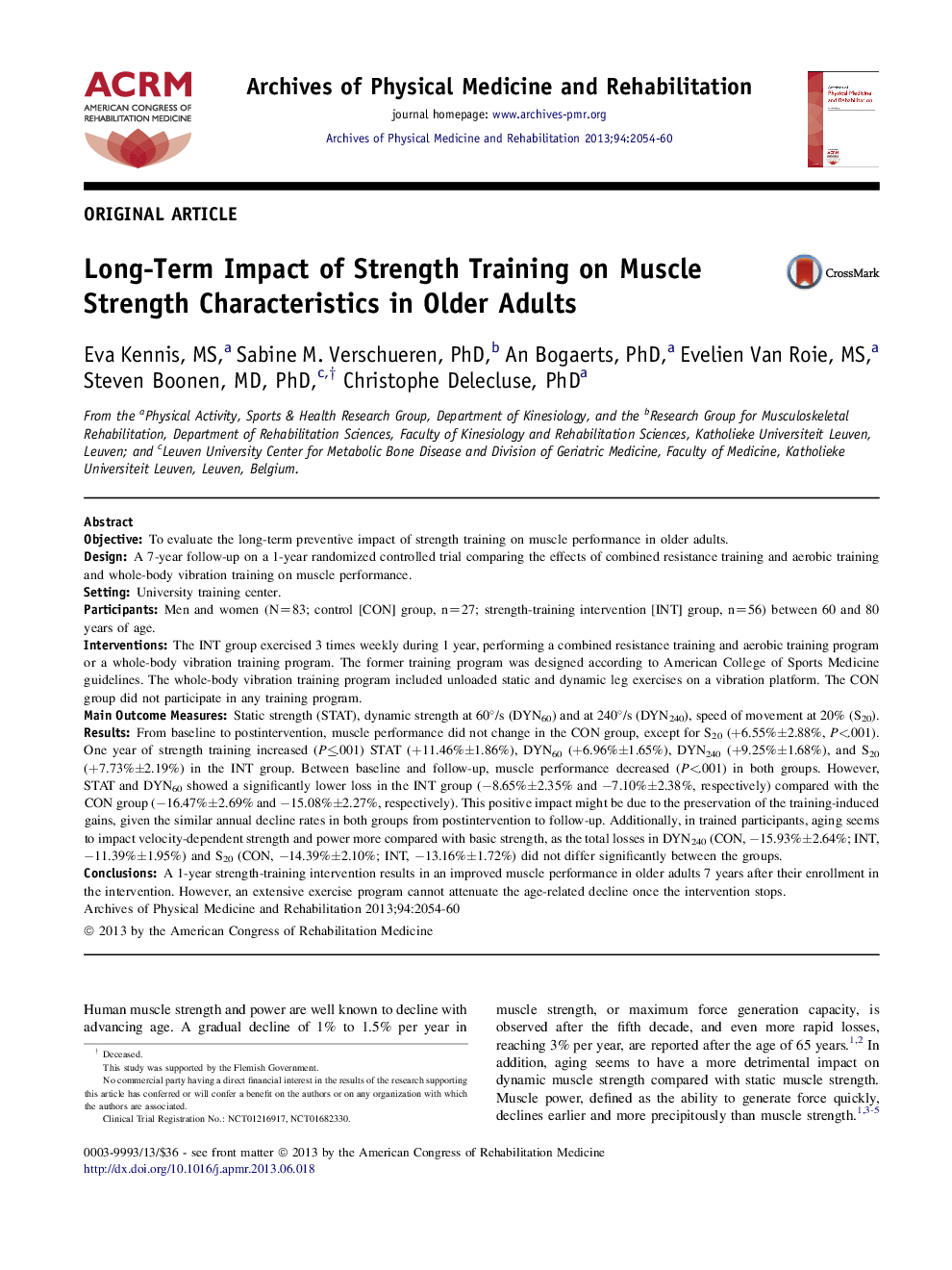| کد مقاله | کد نشریه | سال انتشار | مقاله انگلیسی | نسخه تمام متن |
|---|---|---|---|---|
| 3449105 | 1595705 | 2013 | 7 صفحه PDF | دانلود رایگان |

ObjectiveTo evaluate the long-term preventive impact of strength training on muscle performance in older adults.DesignA 7-year follow-up on a 1-year randomized controlled trial comparing the effects of combined resistance training and aerobic training and whole-body vibration training on muscle performance.SettingUniversity training center.ParticipantsMen and women (N=83; control [CON] group, n=27; strength-training intervention [INT] group, n=56) between 60 and 80 years of age.InterventionsThe INT group exercised 3 times weekly during 1 year, performing a combined resistance training and aerobic training program or a whole-body vibration training program. The former training program was designed according to American College of Sports Medicine guidelines. The whole-body vibration training program included unloaded static and dynamic leg exercises on a vibration platform. The CON group did not participate in any training program.Main Outcome MeasuresStatic strength (STAT), dynamic strength at 60°/s (DYN60) and at 240°/s (DYN240), speed of movement at 20% (S20).ResultsFrom baseline to postintervention, muscle performance did not change in the CON group, except for S20 (+6.55%±2.88%, P<.001). One year of strength training increased (P≤.001) STAT (+11.46%±1.86%), DYN60 (+6.96%±1.65%), DYN240 (+9.25%±1.68%), and S20 (+7.73%±2.19%) in the INT group. Between baseline and follow-up, muscle performance decreased (P<.001) in both groups. However, STAT and DYN60 showed a significantly lower loss in the INT group (−8.65%±2.35% and −7.10%±2.38%, respectively) compared with the CON group (−16.47%±2.69% and −15.08%±2.27%, respectively). This positive impact might be due to the preservation of the training-induced gains, given the similar annual decline rates in both groups from postintervention to follow-up. Additionally, in trained participants, aging seems to impact velocity-dependent strength and power more compared with basic strength, as the total losses in DYN240 (CON, −15.93%±2.64%; INT, −11.39%±1.95%) and S20 (CON, −14.39%±2.10%; INT, −13.16%±1.72%) did not differ significantly between the groups.ConclusionsA 1-year strength-training intervention results in an improved muscle performance in older adults 7 years after their enrollment in the intervention. However, an extensive exercise program cannot attenuate the age-related decline once the intervention stops.
Journal: Archives of Physical Medicine and Rehabilitation - Volume 94, Issue 11, November 2013, Pages 2054–2060